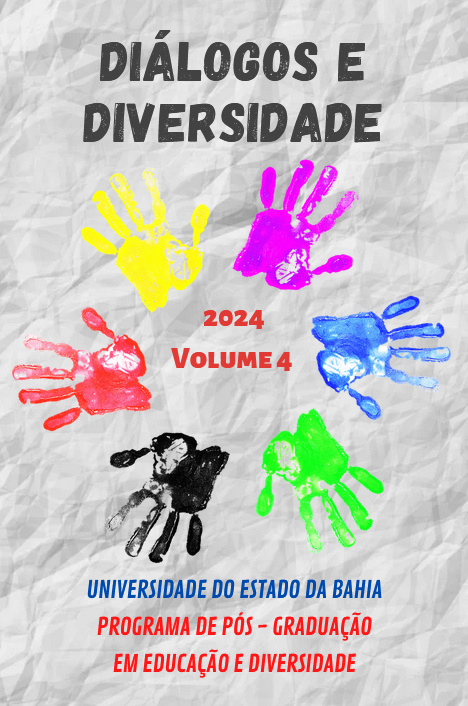UNIVERSAL DESIGN OF LEARNING IN THE EVERYDAY LIFE OF ELEMENTARY SCHOOL TEACHERS II: PONDERATIONS
Keywords:
Universal Design of Learning, Specialist Teachers, Autism.Abstract
Curriculum flexibility for students with autism from the sixth to the ninth grade should be part of the reflections and teaching practices of teachers who work in this segment. These students, autistic and all students with disabilities, as well as all the subjects that make up each classroom are entitled to a schooling that seeks to implement and guarantee the acquisition process and curricular knowledge referring to each grade/school year. In order to achieve this objective, this article presents the perspective of work through the Universal Design of Learning, where it is possible to contemplate all learning barriers in an inclusive way. For this descriptive study with a qualitative approach, a questionnaire was applied containing ten questions based on the initial training and practices of teachers of Elementary School II in the city of Juiz de Fora-MG, the sample consisted of 14 subjects. The results indicated that, in initial training, these teachers did not have any discipline that addressed curricular adaptations. Concludes this knowledge was acquired in training in contexts. Most of these teachers are aware of Universal Design for Learning, but have not effectively appropriated in fact, and do not use its assumptions in their daily curriculum planning.
Downloads
References
BRASIL. Presidência da República, Casa Civil. Lei 13.146, de 6 de julho de 2015. Institui a Lei Brasileira de Inclusão da Pessoa com Deficiência (Estatuto da Pessoa com Deficiência). Brasília, 2015.
BRASIL. Secretaria de Educação Especial (SEE). Marcos Político-Legais da Educação Especial na Perspectiva da Educação Inclusiva. Brasília, 2010.
CENTRE FOR APLLIED SPECIAL TECHNOLOGY (CAST). Universal Design for Learning Guidelines. Wake-field, MA, EEUU: CAST. 2018. Disponível em: http//www.educadora.es/doc/dua/dua_pautas_ esquema_resumem.pdf Acesso em: 15 fev. 2023
______. Universal Design for Learning Guidelines version 2.0. Wakefield, Disponível em: http://udlguidelines.cast.org/ Acesso em: 20 dez. 2020.
GARGIULO, R.; METCALF, D. Teaching in Today’s Inclusive Classrooms: A Universal Design for Learning. New York, USA: Cengage, 2022.
HALL, T. E. et. al. Universal design for learning in the classroom: practical applications. The Guilford Press. A Division of Guilford Publications, Inc 72 Spring Street, New York. 2012.
MEYER, A. ROSE, D. H., GORDON, D. Universal desing for learning: Theory and practice. Wakefield, MA: CAST Professional Publishing. 2016.
PASTOR, C. A. Diseño para el aprendizaje: educación para todos y prácticas de enseñança inclusivas. Rosario, Argentina: Morata, 2016.
PRAIS, J. L.S. Formação inclusiva com licenciadas em Pedagogia: ações pedagógicas baseadas no desenho universal para aprendizagem. Londrina, Brasil: Universidade Tecnológica Federal de Londrina (UFL), 2016.
ROSE, D. H.; MEYER, A. The Future is in the Margins: The Role of Technology and Disability in Educational Reform. 2000. Disponível em: https://files.eric.ed.gov/fulltext/ED451624.pdf Acesso em: 15 abr. 2023.
Downloads
Published
How to Cite
Issue
Section
License
Copyright (c) 2023 Sonia Marta Coelho Pereira, Ana cabanas

This work is licensed under a Creative Commons Attribution-ShareAlike 4.0 International License.
Direitos Autorais
A submissão de originais para a Revista Diálogos e Diversidade (RDD) implica na transferência, pelas(os) autoras(es), dos direitos de publicação. Os direitos autorais para os manuscritos publicados nesta revista são das(os) autoras(es), com direitos da RDD sobre a primeira publicação. As(os) autoras(es) somente poderão utilizar os mesmos resultados em outras publicações indicando explicitamente a RDD como o meio da publicação original.
Licença Creative Commons
Exceto onde especificado diferentemente, aplicam-se à matéria publicada neste periódico os termos de uma licença Creative Commons Attribution-ShareAlike 4.0 International License, que permite copiar e redistribuir o material em qualquer suporte ou formato, adaptar, remixar, transformar, e criar a partir do material para qualquer fim, mesmo que comercial, dando o crédito apropriado, prover um link para a licença e indicar se mudanças foram feitas, distribuindo as suas contribuições sob a mesma licença que o original, não podendo aplicar termos jurídicos ou medidas de caráter tecnológico que restrinjam legalmente outros de fazerem algo que a licença permita.



 Esta obra está licenciada com uma Licença
Esta obra está licenciada com uma Licença 